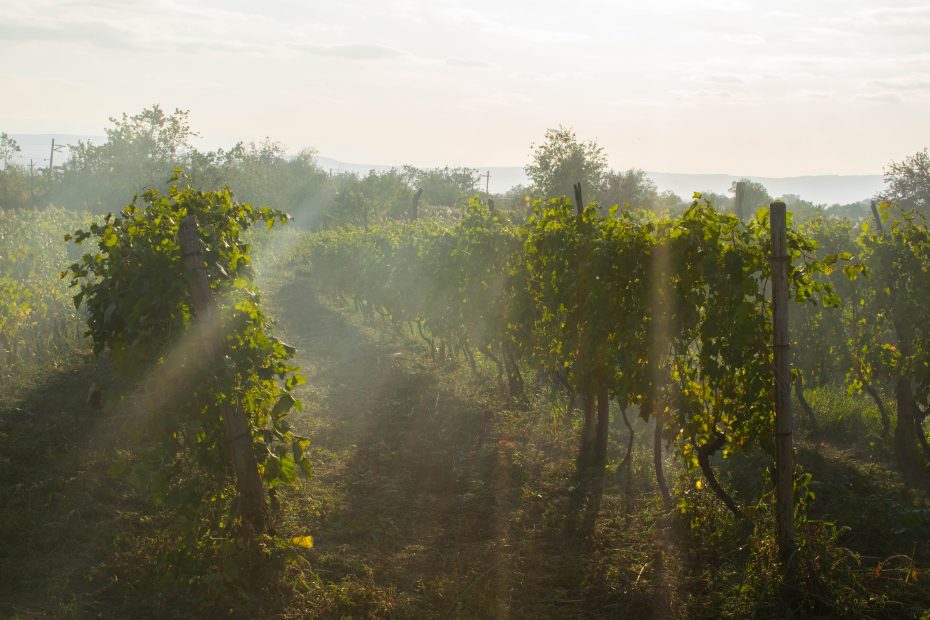Georgia, nestled in the Caucasus region between Europe and Asia, is home to an ancient winemaking tradition dating back at least 8,000 years. Its unique indigenous grapes, impressive wineries, distinct wine regions and culture make it an ideal destination for wine lovers seeking a new and authentic experience.
Table of Contents
A History of Winemaking
Wine has been integral to Georgian life and culture for millennia. Archaeological evidence shows that grape cultivation and wine production began as early as 6000 BC. Georgia claims to have the oldest wine production in the world. Over generations, winemaking practices and grape growing methods have been passed down and refined. Many traditional methods are still used today.
Indigenous Grape Varieties
Georgia is home to over 500 indigenous grape varietals, many of which are still unknown in the wider wine world. Key varieties like Saperavi, Rkatsiteli and Mtsvane have distinctive characteristics and make Georgian wines truly unique.
Saperavi is a bold red variety that produces deeply colored, full-bodied wines with smoky, black fruit flavors and high acidity. Saperavi thrives in the Kakheti region where it makes both varietal wines and blends.
The aromatic white grape Rkatsiteli maintains its freshness and fruitiness even in high yields. It often displays notes of green apple, pineapple and lime zest when vinified carefully. Mtsvane is another popular white variety that can produce wines with richness and bright citrus notes.
Top Wineries to Visit
With over 500 wineries in Georgia, narrowing down the choices can be tough for visitors. Some of the top, must-visit wineries include:
-
Pheasant’s Tears – Founded in 2007, this small winery focuses on tradition and natural winemaking. Their diverse wines exhibit the uniqueness of Georgia’s terroirs. The tasting room in Sighnaghi provides panoramic views.
-
Khareba Winery – One of Georgia’s most famous wineries, Khareba dates back to 1913. It offers an extensive range of wines and brandies. The expansive cellars carved out of limestone bedrock provide a cool, atmospheric tasting environment.
-
Okro’s Wine Cellar – Situated in Kakheti, Okro’s cellar features clay qvevri winemaking vessels over 100 years old. Guests can sample wines made in these traditional pots. The passionate, welcoming owner provides an authentic experience.
Key Wine Regions
Georgia’s wine regions each possess unique terroirs, microclimates and grape varieties.
Kakheti is considered the heart of Georgian viticulture. Its dry, sunny climate allows grapes like Rkatsiteli and Saperavi to thrive. Kakheti accounts for 60% of Georgia’s wine production.
The region of Kartli focuses on white wine production, especially Mtsvane and Rkatsiteli. Its continental climate brings hot summers and cold winters.
Imereti in Georgia’s west specializes in aromatic whites and sparkling wines. The coastal climate mitigates swings in temperature.
While Kakheti, Kartli and Imereti are the main regions, wineries throughout Georgia provide diverse expressions of local varieties.
Traditional Winemaking
One of Georgia’s claims to fame is its traditional qvevri winemaking. For centuries, grapes were fermented and aged in beeswax-lined terra cotta pots called qvevris, which are buried underground. Many wineries still use this ancestral method, which imparts a unique character to the wines.
The qvevri vessels inspire more experimentation with natural, unfiltered wines through skin-contact maceration and extended lees aging. This time-honored Georgian technique has influenced the larger natural wine movement.
Wine Culture
Wine holds an important place in Georgian cultural identity and hospitality rituals. Traditional Georgian feasts feature endless toasts with glasses of wine. Unique styles like amber wines and sparkling reds suit the array of flavorful, locally-sourced dishes.
As in much of Europe, wine is integral to the dining experience rather than merely an alcoholic beverage. Georgians traditionally retained wines in clay vessels and buried them near family homes, keeping them intertwined with daily life. The country’s 8,000 vintages of winemaking are a point of pride.
Emerging Wine Tourism
In recent years, Georgia has invested greatly in wine tourism. With its stunning and varied landscapes, winery accommodations like guest houses and restaurants, and legendary hospitality, Georgia has enormous potential as an up-and-coming wine destination.
Areas like Kakheti offer easy access to dozens of family-run wineries in a concentrated area. Signature festivals like New Wine Festival and Georgian Wine House introduce visitors to unique varieties and traditional winemaking.
For adventurous wine lovers, Georgia represents an open frontier filled with undiscovered treasures waiting to be explored off the beaten path. Those who appreciate indigenous grapes, artisanal production and cultural immersion will find Georgia alluring.
Conclusion
With its ancient winemaking traditions, distinct native grapes, emerging wine regions and passionate winegrowers, Georgia deserves to be on every wine lover’s radar. The country offers an alternative to overtouristed, mainstream wine destinations. For an authentic, eye-opening wine experience, look no further than the captivating vineyards of Georgia.
FAQs
What are the key indigenous grapes of Georgia?
Some of Georgia’s main native grape varieties are Saperavi, Rkatsiteli, and Mtsvane. Other lesser known varieties include Kisi, Khikhvi, and Chinuri.
Which region is best known for wine production in Georgia?
Kakheti is considered the premier wine region of Georgia and accounts for the majority of the country’s wine production. It is located in eastern Georgia.
When were grapes first cultivated in Georgia?
Archaeological evidence indicates grapes were first cultivated and wine produced in Georgia as early as 6000 BC to 4000 BC, making it one of the earliest wine producing regions in the world.
What is qvevri winemaking?
Qvevri refers to the large earthenware vessels used in traditional Georgian winemaking. This technique involves fermenting, aging, and storing wines for extended periods in buried qvevris.
What style of wines does Georgia specialize in?
Georgia is best known for its amber and orange wines. These skin-contact white wines are made by leaving grape skins and solids to macerate with the juice, resulting in amber/orange colors and tannic texture.
